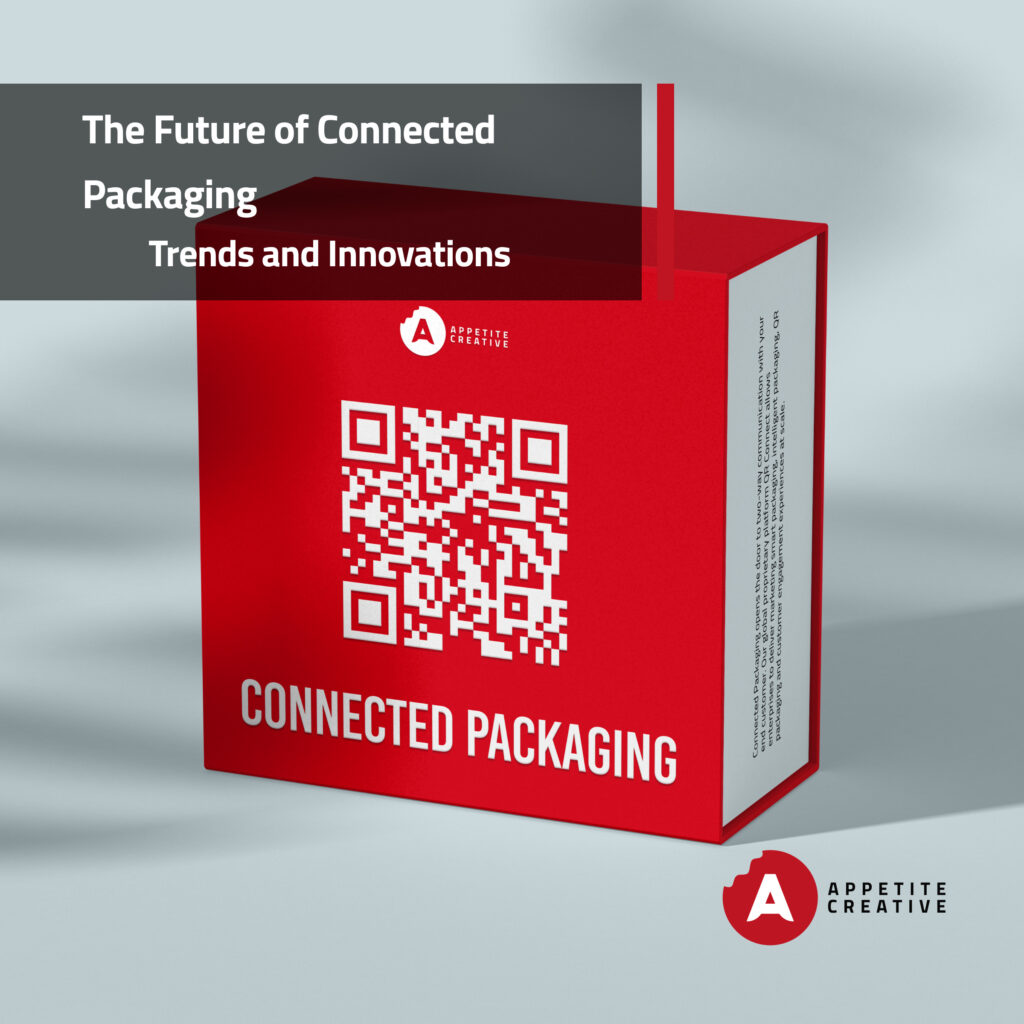
The packaging industry is experiencing a significant transformation with the development of connected packaging. By integrating digital elements into physical packaging, brands find new ways to engage consumers, improve supply chain efficiency, and ensure product authenticity. This article explores the key trends and innovations that will drive the future of connected packaging.
Smart Labels and QR Codes
Smart labels and QR codes are becoming essential components of connected packaging. These technologies allow consumers to access lots of information regarding a product, by simply scanning a code with their smartphones. From nutritional facts to promotional offers, QR codes bridge the gap between the physical and digital worlds. As consumers increasingly seek transparency and instant access to information, the adoption of smart labels is expected to surge.
Augmented Reality (AR) Experiences
Augmented Reality (AR) is transforming the way consumers interact with products. Through AR-enabled packaging, brands can offer immersive experiences that captivate and engage users. For example, a cereal box might become much more than that because of animated characters or games that are viewed through a smartphone app. This enhances the consumer experience and creates memorable brand interactions that can drive loyalty and word-of-mouth marketing.
NFC and RFID Technology
Near Field Communication (NFC) and Radio Frequency Identification (RFID) technologies are revolutionizing inventory management and anti-counterfeiting measures. NFC tags embedded in packaging allow consumers to verify the authenticity of a product with a simple tap of their smartphone. On the supply chain side, RFID tags enable real-time tracking of products, improving inventory accuracy and reducing losses. As the cost of these technologies continues to decrease, their adoption is likely to expand across various industries.
Sustainability and Connected Packaging
Sustainability is a major driver in the packaging industry, and connected packaging is no exception. Brands are exploring ways to use technology to promote eco-friendly practices. For example, smart packaging can provide consumers with information on how to recycle or dispose of the packaging responsibly. Additionally, connected packaging can track and reduce food waste by monitoring freshness and alerting consumers when a product is nearing its expiration date. This convergence of technology and sustainability is poised to resonate with environmentally conscious consumers.
Personalization and Consumer Insights
Connected packaging offers unparalleled opportunities for personalization. By leveraging data collected through smart packaging, brands can tailor their marketing efforts to individual consumers. Personalized messages, product recommendations, and exclusive offers can be delivered directly to a consumer’s device, creating a more intimate and engaging shopping experience. Furthermore, the data generated by connected packaging provides valuable insights into consumer behavior, enabling brands to refine their strategies and develop products that better meet consumer needs.
Blockchain for Transparency and Traceability
Blockchain technology is being integrated into connected packaging to enhance transparency and traceability in the supply chain. By recording every transaction and movement of a product on a blockchain, brands can provide consumers with a detailed history of the product’s journey from farm to table. This level of transparency builds trust and ensures the authenticity of products, particularly in industries such as food and pharmaceuticals where safety and quality are paramount.
Conclusion
The future of connected packaging is bright and full of potential. Technology continues to evolve, therefore how brands connect with consumers through their packaging will also change. From smart labels and AR experiences to NFC technology and blockchain integration, connected packaging is set to revolutionize the packaging industry. By embracing these innovations, brands can enhance consumer engagement, improve supply chain efficiency, and promote sustainability, ultimately creating a more connected and informed world.
Connected packaging is not just a trend; it’s the future of how we will interact with products, blending the physical and digital worlds in ways we have only begun to imagine. As this field continues to evolve, it will certainly open up new possibilities for both brands and consumers.
